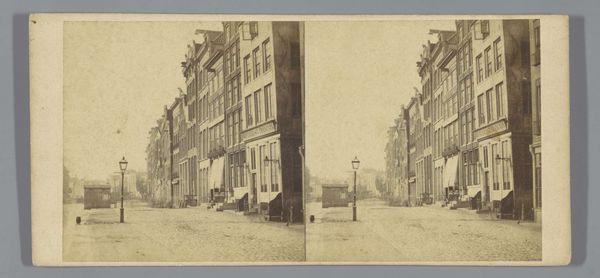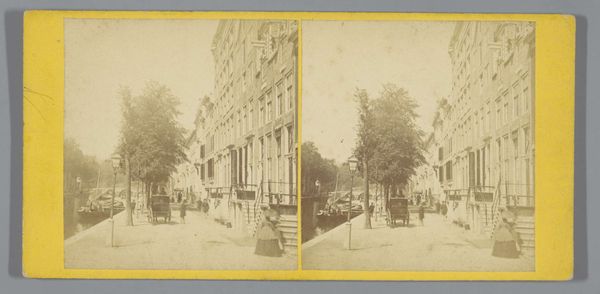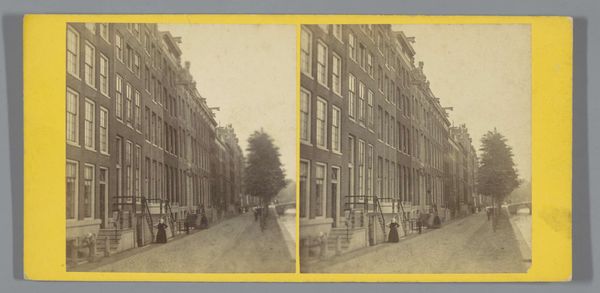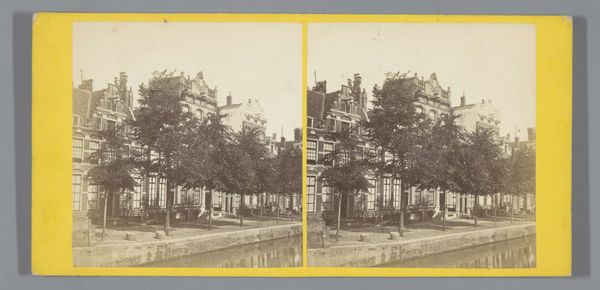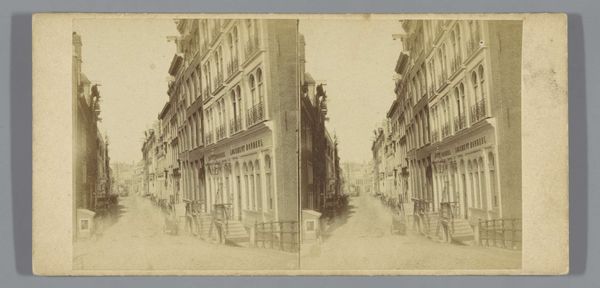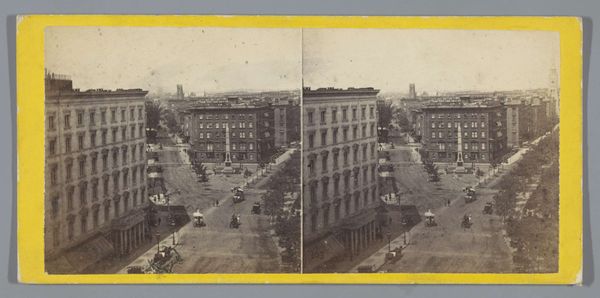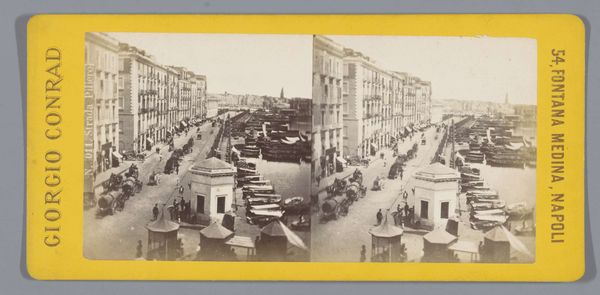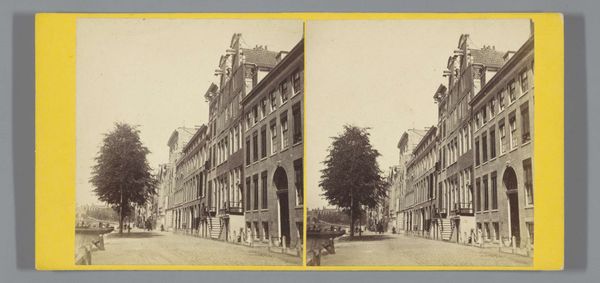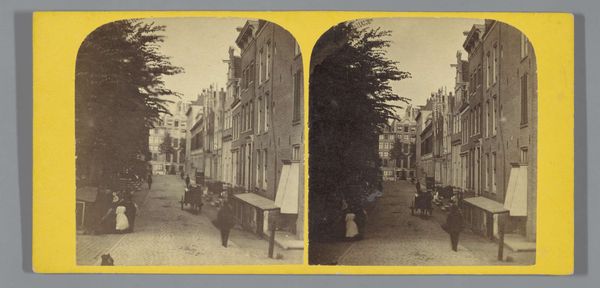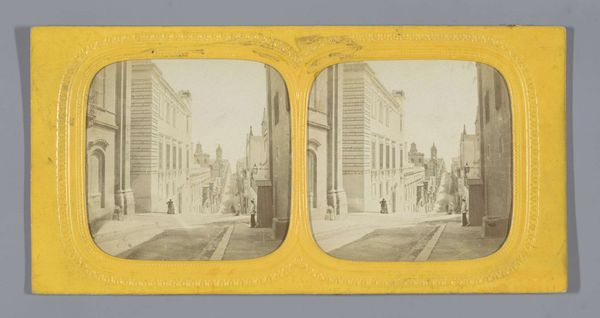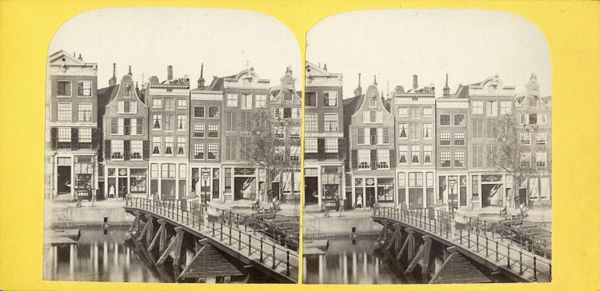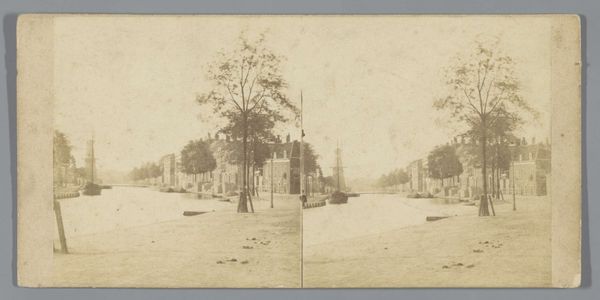
Gezicht op de Keizersgracht bij de Vijzelstraat in Amsterdam 1860 - 1885
0:00
0:00
Dimensions: height 83 mm, width 170 mm
Copyright: Rijks Museum: Open Domain
Editor: Here we have Pieter Oosterhuis’s gelatin silver print, "Gezicht op de Keizersgracht bij de Vijzelstraat in Amsterdam," made sometime between 1860 and 1885. The symmetrical composition and the row of trees give the street a rather serene quality. How do you interpret this cityscape? Curator: The symmetry is definitely intentional, calling to mind classical ideals, but also masking a starker social reality. The very orderliness presented hides a growing disparity within Amsterdam at the time. Who inhabited these grand canal houses and who cleaned their streets? Where are the working-class people in this image? This perspective invites us to consider the power structures implicit in urban planning. Editor: So you're saying it’s not just a peaceful snapshot but a constructed reality? Curator: Precisely. The very act of photographing a certain segment of society inherently excludes others. Oosterhuis’s work prompts a critical examination of whose stories are told and whose are erased in the visual representation of urban life. Think about who is granted visibility and who is systematically obscured. How does this image uphold or challenge social hierarchies? Editor: That’s a powerful point. I was initially drawn to the aesthetics, but now I see the image has embedded social and political implications. Curator: It's about learning to "read" images critically. How does its context influence how we understand it? Editor: Now I see that the beauty isn't just visual, but a starting point for much bigger questions. I’ll definitely carry this approach to the next artwork. Curator: It seems we’re aligned then – visual art is activism.
Comments
No comments
Be the first to comment and join the conversation on the ultimate creative platform.
